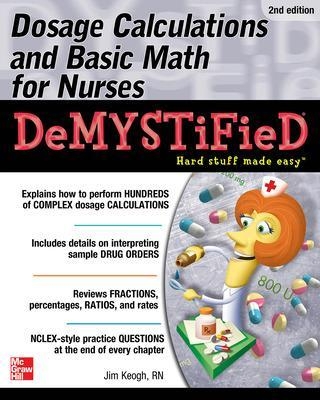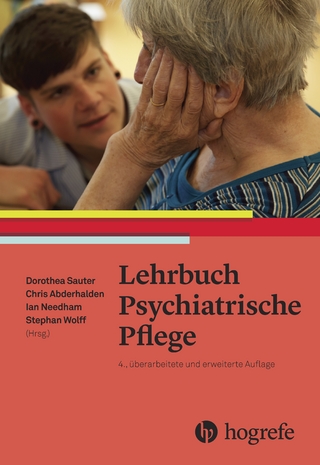
Dosage Calculations and Basic Math for Nurses Demystified, Second Edition
McGraw-Hill Professional (Verlag)
978-0-07-184968-5 (ISBN)
- Titel z.Zt. nicht lieferbar
- Versandkostenfrei
- Auch auf Rechnung
- Artikel merken
Publisher's Note: Products purchased from Third Party sellers are not guaranteed by the publisher for quality, authenticity, or access to any online entitlements included with the product.
The fun, fast, and easy way to learn basic math skills and how to accurately calculate dosages
Calculating the correct dose to administer to the patient can be very challenging – unless you follow the proven approach taught in Dosage Calculations and Basic Math for Nurses Demystified. Topics are presented in the in the order in which many nurses and nursing students need to learn them – starting with the basics and then gradually moving on the techniques used in our nation’s leading medical facilities. The 2nd Edition also includes 4 new chapters covering basic math skills essential for daily nursing practice, including equations, percentages, proportions, decimals, and fractions.
Written by a graduate nurse and top instructor, Dosage Calculations and Basic Math for Nurses Demystified consists of chapters that follow a time-tested formula that first explains techniques in an easy-to-understand style and then shows you how you can use it in a real-world healthcare environment. Hundreds of examples help you absorb the material, and NCLEX®-style practice questions reinforce learning.
This self-teaching guide offers:
Learning objectives at the beginning of each chapter
Tips for avoiding common errors when using MAR charting systems
Details on IV therapy
Coverage of how to calculate a pediatric, Heparin, and Dopamine dose
Three final exams
Measurements in SI units
Details on tube feeding
Overview of basic math skills needed by nurses for daily practice
Simple enough for a beginner, but challenging enough for an advance student, Dosage Calculations and Basic Math for Nurses Demystified is your key to learning these essential nursing skills.
Jim Keogh is on the faculty of Columbia University teaching courses in its technology certification program. He has spent 15 years developing computer systems for major Wall Street firms such as Salomen, Inc. and Bear Stearns and has written several best-selling books for Prentice Hall and IDG.
Part I: Dosage Calculations
Chapter 1: Medication Order and Medication
Chapter 2: The Formula Method
Chapter 3: The Ratio-Proportion Method
Chapter 4: Intravenous Calculations
Chapter 5: Calculating Pediatric Doses
Chapter 6: Calculating Heparin Dose
Chapter 7: Calculating Dopamine Dose
Chapter 8: Calculating Dose for Children Using Body Surface Area
Chapter 9: Enteral Tube Feeding
Part 2: Basic Math Skills
Chapter 10: Positive and Negative Numbers
Chapter 11: Fractions, Decimals, and Percentage
Chapter 12: Radios and Proportions
Chapter 13: Equations
Appendix A: Answering Tricky Questions
Appendix B: Quick Reference
Final Exam -- Part 1
Final Exam -- Part 2
Final Exam -- Part 3
Index
| Erscheint lt. Verlag | 16.6.2015 |
|---|---|
| Zusatzinfo | 15 Illustrations |
| Sprache | englisch |
| Maße | 185 x 231 mm |
| Gewicht | 408 g |
| Themenwelt | Medizin / Pharmazie ► Allgemeines / Lexika |
| Medizin / Pharmazie ► Gesundheitswesen | |
| Medizin / Pharmazie ► Medizinische Fachgebiete ► Pharmakologie / Pharmakotherapie | |
| Medizin / Pharmazie ► Pflege ► Ausbildung / Prüfung | |
| Pflege ► Fachpflege ► Neurologie / Psychiatrie | |
| ISBN-10 | 0-07-184968-8 / 0071849688 |
| ISBN-13 | 978-0-07-184968-5 / 9780071849685 |
| Zustand | Neuware |
| Informationen gemäß Produktsicherheitsverordnung (GPSR) | |
| Haben Sie eine Frage zum Produkt? |
aus dem Bereich


